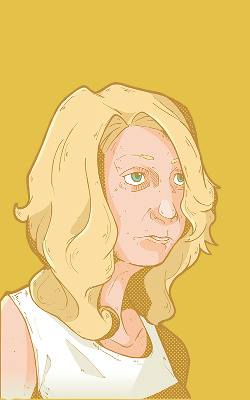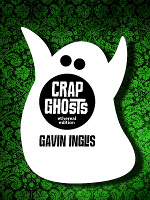Blog
Hana Feels
30th April 2015
Learning to talk about self-harm with an interactive web story.So I’ve been writing too many zombies lately. Neighbourhood Necromancer and Zombies, Run! both have a lot of zombies in them. (Eagle-eyed readers may spot a clue in the names.) I was just feeling that I needed to do something more mainstream, when the Hana Feels project showed up.
This is an interactive, web fiction about … well, if you haven’t already, maybe you’d like to try it without spoilers? Read Hana Feels. I’ll use the terrific art of Scribble Imp as an eye break:
![[Hana and friends]](/images/blog/300415a.jpg)
Hana Feels is a story about mental health; specifically, self-harm. It had been in “development hell” for a while and I was brought in to restart the project and complete it by the start of April 2015. Previous commitments meant I couldn’t start until January.
I don’t mind admitting it was an intimidating prospect. The timescale was tight: three months to come up with a good concept, learn new tech, write 25000 words, code and style it all, and do the game-like balancing that would be required. All that stuff can be solved with time spent at the keyboard (and some colourful language directed at CSS’s quirks) but the more intimidating challenge was to represent self-harmers in an accurate and sensitive way.
The original premise was to tell the story of Hana, a girl who self-harms, but to allow the reader to adjust her feelings up and down. The text would show how this changed Hana’s perception of the world. We have to credit Zoe Quinn’s Depression Quest for inspiration here. However I didn’t fancy repeating Zoe’s work, and wondered if I could find a different approach which might still be appropriate to the subject matter.

There has to be a reason to put interactivity into a story. In this case, I thought about how awkward people feel when they have conversations outside their comfort zone. And talking to a friend or family member about their self-harm certainly falls outside the comfort zone for most people.
So I decided on a conversational approach. Instead of inhabiting Hana’s head, we observe the conversations she has with the important people in her life: a helpline guy, her boss, her best friend and an old dude who comes along later. At the end of each page, we get to choose what that person says to Hana, and at the end of each session we peek into her journal and see how it made her feel. It’s not possible, or realistic, to “fix” Hana in the limited time we spend with her. All we can do is try to help her feel valued, understood and supported. And if she feels better, we can hope for a more positive ending.
Writing this required a ton of research and a certain amount of courage. The timescale was a lot shorter than I would have liked, and in the end I took an additional couple of weeks to refine Hana’s responses; to playtest, if you like. But when some of my test readers commented they felt guilty for saying things they knew would increase Hana’s stress levels, I knew I was onto something.
I chose Twine 2.0 as the tech platform. It’s a popular foundation for personal work and I thought its community would be interested in the project. I spent a lot of time messing with its structure and styles, but even out of the box, Twine is very accessible to anybody who wants to make their own game.
At the heart of the work are two objectives. Readers may know somebody who self-harms, but feel awkward about communicating with them. I hope that by having a dialogue with a fictional self-harmer first, those people will gain confidence and feel informed enough to have a real conversation on the subject.
The second objective is to direct that conversation in a positive and sensitive way. It’s natural to enter it full of well-meaning suggestions and think we are being supportive. But we may not understand the situation as well as we think we do. And we should learn to listen first; to really listen.
This work was supported by New Media Scotland’s Alt-w fund, with investment from the Scottish Government.
